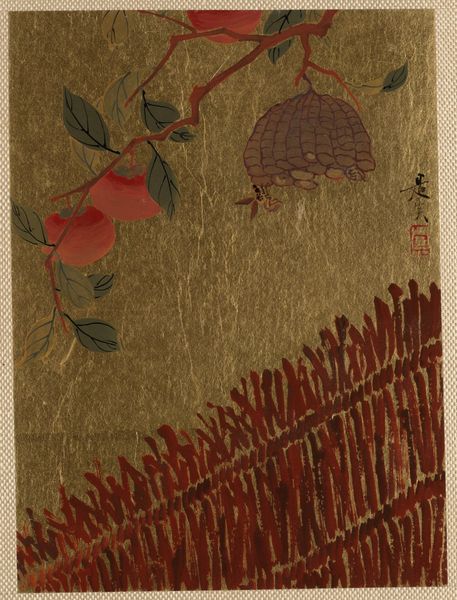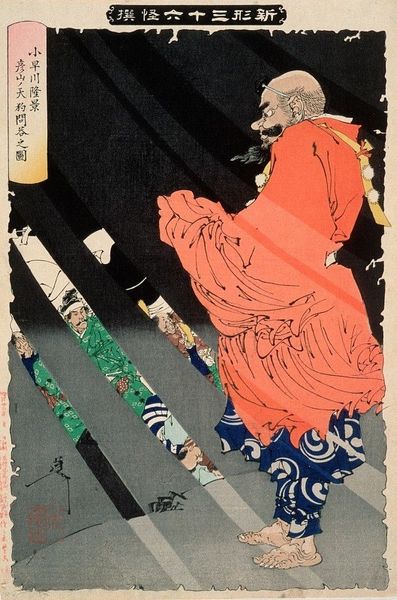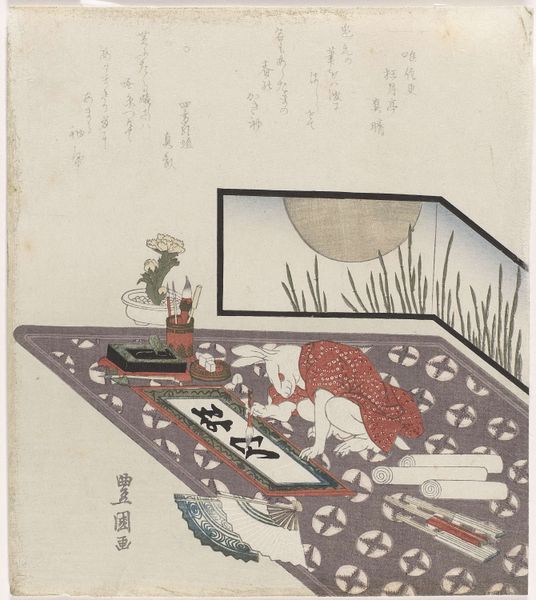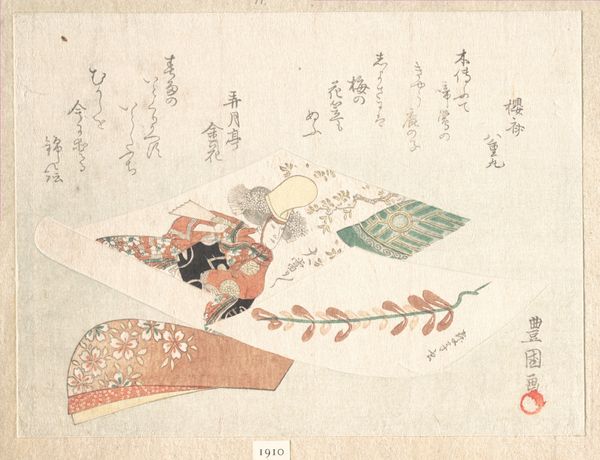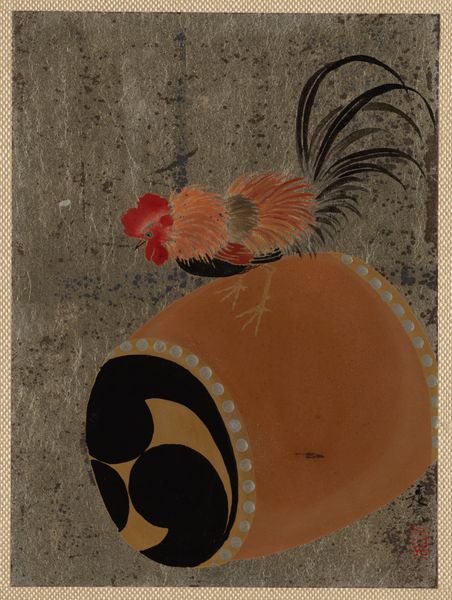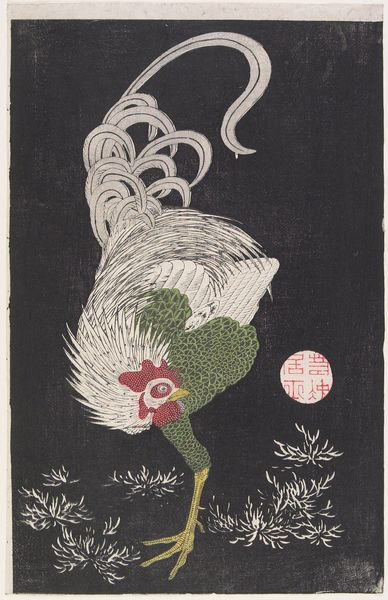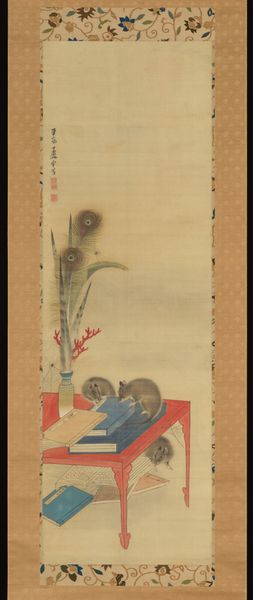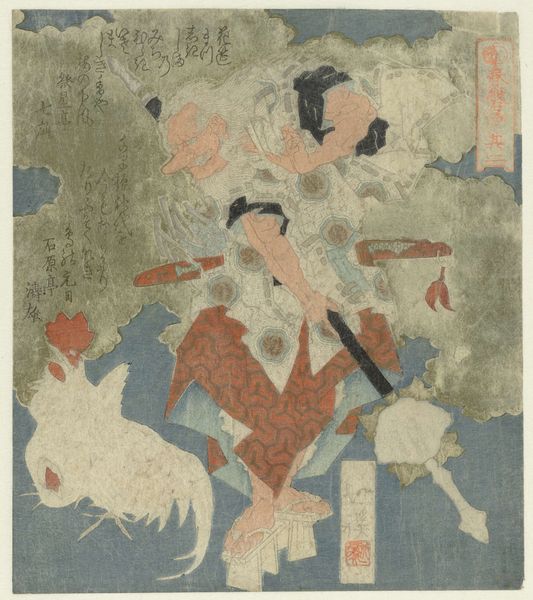
watercolor
#
water colours
#
impressionism
#
asian-art
#
watercolor
#
watercolor
Dimensions: 4 3/4 x 3 1/2 in. (12.1 x 8.9 cm)
Copyright: Public Domain
Curator: "Kettle and Box with Paint Brushes," a watercolor created by Shibata Zeshin in 1882, offers a glimpse into the tools and artistry of the late Edo and early Meiji periods. It's currently held in the Metropolitan Museum of Art. Editor: Well, my first reaction is of quiet contemplation. The metallic background, the almost jewel-toned box, it gives the image such an alluring and artistic feel. There is a sense of the personal, as well, that intrigues. Curator: Yes, there’s a careful arrangement of everyday items. The juxtaposition of the kettle, the box, and the paintbrushes presents a specific, deliberately constructed arrangement of tools in the artist's workspace. How do you read the image’s organization, would you say? Editor: Structurally, the balance of the horizontal and vertical is striking, from the soft gleam of the ground, which could represent water, to the upright cup of brushes and sharp lines of the box. Even the subtle curves of the kettle and its handle provide an intentional contrast that is hard to deny. There is movement that creates such satisfying unity in composition. Curator: Absolutely, and the choice of objects elevates their historical meaning. During the Meiji Restoration, the traditional arts were both celebrated and challenged by Western influences. What place did this period play? Editor: Indeed. The tension between preservation and innovation was ever-present. Artists navigated the influence of Western styles on established traditions of Japanese painting, and these everyday objects took on meaning beyond themselves; they serve as cultural documents. There is even what some critics may describe as a nostalgic sense imbued throughout the medium of watercolors that evokes such themes, to great effect. Curator: The materiality adds to this feeling, doesn't it? Shibata's use of watercolors imbues the scene with both transparency and depth, almost giving each item depicted its own space, its own atmosphere, allowing one to study the image for what it evokes on multiple different occasions. Editor: Precisely! A humble assemblage, transformed into a complex composition. Curator: It prompts a deeper consideration of cultural adaptation and personal artistic practice during the Meiji era. Editor: An exploration of composition and history revealed through an artist's tools. Fascinating.
Comments
No comments
Be the first to comment and join the conversation on the ultimate creative platform.
